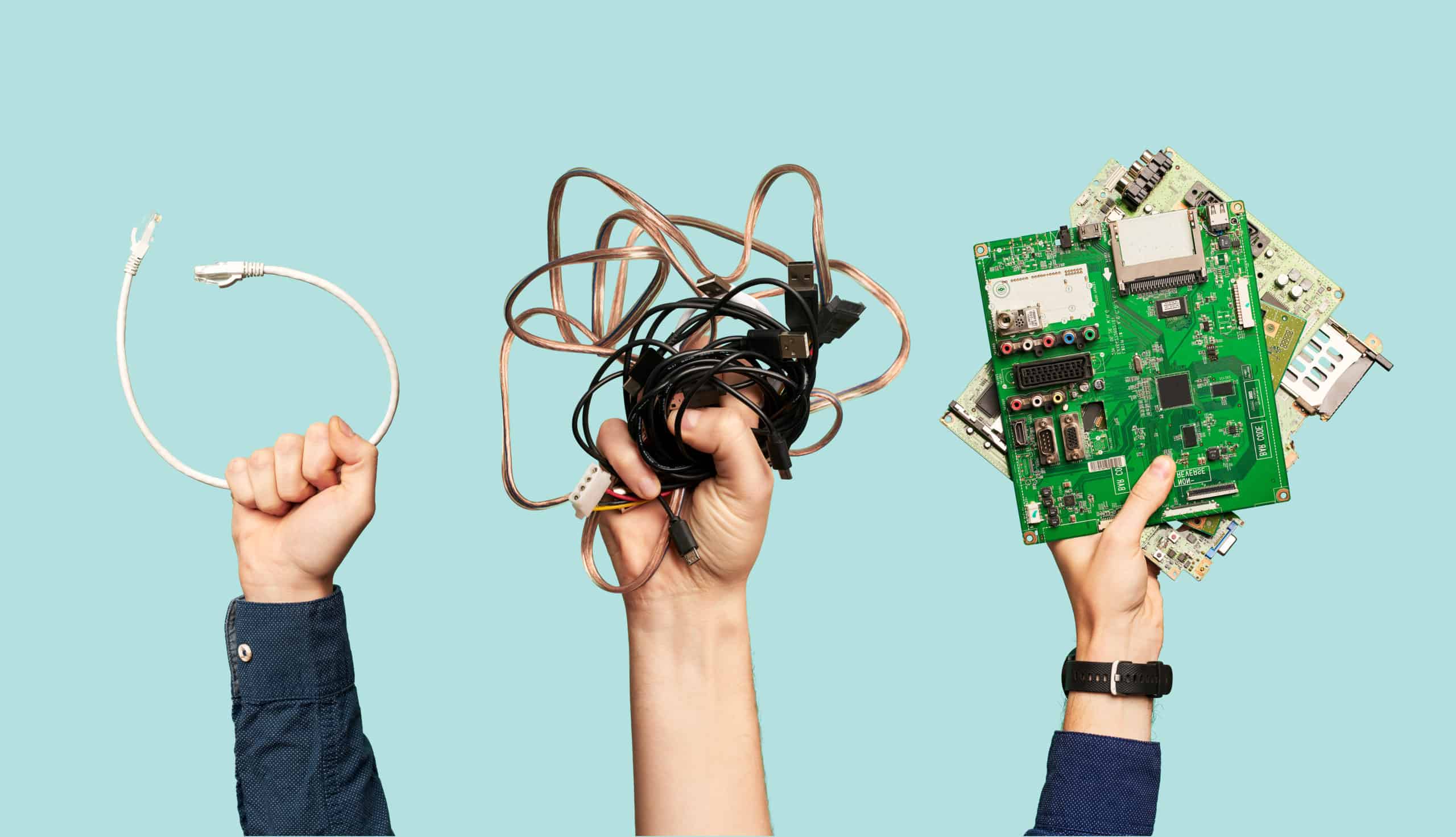Technology advancement should be followed with proper waste treatment and recycling to make it accessible and available for the next generations.
Electrical Waste (e-waste) is becoming one of the leading waste streams in manufacturing activities, and countries are trying to solve this issue through e-waste treatment enterprises. Rapid economic growth followed by urbanization and increased production and consumption of electronic products has been threatening the environment with various risks that can endanger sustainable economic growth. E-waste equipment is TVs, refrigerators, washing machines, air conditioners, personal computers, and mobile phones.
Policies on the country level have been addressing improper management of e-waste through national legislation to improve the reuse, recycling, and other forms of material recovery from e-waste to reduce the amount and types of materials disposed of in landfills. Recycling waste electric and electronic equipment is important not only to reduce the amount of waste requiring treatment but also to promote the recovery of valuable materials. However, these legislations are mostly in draft and less in action in many countries, especially developing countries, and they cannot be achieved until an assessment of e-waste quantification and disposal is carried out.
The Country Case
In recent years e-waste has become a headline topic, and recycling in e-waste is becoming more evident. The quantity of e-waste is expected to increase rapidly due to technological advancement and public demand.
Over 500 million tons of computers were discarded between 1997 and 2007 in the United States, and 610 million tons of computers became obsolete in Japan by the end of 2010. The same statistics indicate more than 1.1 million tons/year of e-waste are produced in China, mainly from the manufacturing industry. Annually, 20–50 million tons of e-waste are generated worldwide, and this figure is growing by about 45 million tons/year.
E-waste is about 4 percent of municipal waste in the EU. Germany has an annual e-waste stream of 1.8 million Mg, Austria by 85000 Mg per year, and Poland by 30000 Mg per year with an increase in these amounts. The European Parliament adopted 2003 two directives: the Directive on the Waste from Electrical and Electronic Equipment and the Directive on the Restriction of Hazardous Substances. The Polish government legislation toward e-waste treatment came into force in October 2005, requiring producers to recycle electronic and electrical appliances. The policy is expected to reduce the amount of electronic waste going to landfills by up to 80 percent, significantly reducing the overall impact these products have on the environment.
In Korea, due to rapid economic growth followed by urbanization, the breakage of large traditional families into small nuclear families, and continuous changes in equipment features and capabilities cause a tremendous increase in the sale of new electrical and electronic equipment (EEE) and a decrease in the sale of used EEE. Subsequently, the ever-increasing quantity of e-waste has become a serious social problem and environmental threat. Therefore, the gradual increase in the generation of e-waste intensifies the interest in recycling to conserve resources and protect the environment.
Several private enterprises since recently recycle all waste TVs on a commission basis. The recycling of waste personal computers and mobile phones is insignificant compared to the amount of estimated production. Korea has adopted and enforced the extended producer responsibility (EPR) system. Korea is consistently improving the recycling rate to the standards indicated in the EU directives for WEEE. Especially environmentally friendly and energy-saving technologies are being developed to recycle metal values.
The Recovery
Recycling is beneficial for the environment and in making a profit from its business as you recover valuable materials. E-waste is non-homogenous and complex in terms of materials and components. In order to develop a cost-effective and environmentally friendly recycling system, it is important to identify and quantify valuable materials and hazardous substances to understand the physical characteristic of this waste stream.
The composition of the e-waste depends on the type and age of the equipment. For instance, waste from IT and telecommunication systems contains more precious metals than scraps from household appliances. In older equipment, valuable metals and hazardous substances’ content is higher than in newer devices. E-waste is composed of metal (40 percent), plastic (30 percent), and refractory oxides (30 percent). And the typical metal scrap consists of copper (20 percent), iron (8 percent), tin (4 percent), nickel (2 percent), lead (2 percent), zinc (1 percent), silver (0.02 percent), gold (0.1 percent) and palladium (0.005 percent). Polyethylene, polypropylene, polyesters, and polycarbonate are typical plastic components. One of the major problems in treating e-waste is the content of substances such as heavy metals and organic compounds. E-waste treatment methods are mechanical separation, thermal treatment, hydrometallurgical treatment, and electrochemical.
Photo: Sergey Mironov/Shutterstock
You might also like:
Support us!
All your donations will be used to pay the magazine’s journalists and to support the ongoing costs of maintaining the site.
Share this post
Interested in co-operating with us?
We are open to co-operation from writers and businesses alike. You can reach us on our email at [email protected]/[email protected] and we will get back to you as quick as we can.










